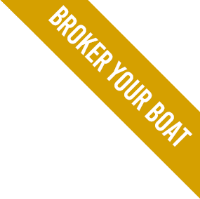Semper Paratus: Boat Kits for Safety July 12, 2022
It’s the motto of the U.S. Coast Guard: Semper paratus, or “Always prepared.”
It’s also not a bad operating philosophy for boaters, even if your boating takes place on a quiet lake or pond, and not out on the raging deep.
Part of being always prepared is to plan for the worst that can happen whenever you are out boating, and have resources on hand to deal with those situations. That means having a Boat Kit fully stocked and stored away on board to deal with any and all emergency situations.
Old tars call the Boat Kit by other names, like Sea Bag. There is also the Ditch Kit, which only comes in handy when you need to abandon ship, which hopefully is a rare or nonexistent experience. And there’s also the concept of a Dry Bag, which means something waterproof where you can store your cell phone, tablet, wallet and cash or any other gear that needs to be kept away from wet conditions.
It goes without saying (but we’ll say it anyway) that every boat needs to carry certain safety items at all times. The list of these items starts with Personal Floatation Devices (life jackets) for everyone on board. You and your passengers’ personal safety is also enhanced by making sure everyone has sunglasses, sunscreen, UV-blocking clothing, a protective hat and proper gripping boat shoes.
But your Boat Kit should have the following safety items:
A sound-making device.
Whistles, horns, bells… anything that can make a loud and distinctive sound to call attention to your location. Think: your boat has become disabled, the weather has closed in, night has fallen and you need someone to find you. Making a loud noise might save you.
Flashlight.
Every boat should have a good flashlight on board, with fresh batteries.
Water.
Yes, you brought along a cooler. But in this emergency kit, you should have an extra bottle or two, just in case.
First aid kit.
Hopefully, the worst medical emergency you’ll ever face is a kid with a skinned knee. But semper paratus means having a good first-aid kit in your Boat Kit, with bandages, gauze, tape, antibiotic creams, aspirin, and any extras depending on the needs of your crew. You might want to include an Epi-pen if your passengers are allergic to bee stings or peanut allergies; or a supply of insulin if you’ve got a diabetic on board.
Visual signals.
Lakeside boaters might need these slightly less than ocean-going mariners, but it’s not a bad idea to pack along a flare, smoke signal or other visual attention-getting device. Just in case.
A good knife.
If your propellers get fouled on someone’s anchor line, you’ll need a good sharp knife to cut yourself free.
Other items that might be useful to have onboard:
Fire extinguishers.
The Coast Guard recommends at least one for boats under 40 feet and two for larger vessels. Make sure you and your crew know how to use them.
Bailing device.
If you suddenly got a lot of water in the cockpit of your boat, could you quickly get it out? Consider a portable pump, or even just a bucket of some kind. You won’t need it until you need it!
Oars and paddles.
If the engines stop, can you maneuver? Having an oar or a paddle on board might help you get out of harm’s way and back to shore.
A working anchor.
Again, if you have no power, an anchor and suitable rode, or line, can hold you boat in place until help arrives.
Snorkel mask and fins.
There may be times when you need to see what’s going on with your keel and props. Have a mask and fins handy.
Communication device.
When you need to call for help, you need something to call with! Most of us carry our cell phones, which work great unless they’re out of range. Many boats also have VHF radios, either portable or installed, for hailing for help. Make sure you have a means to call someone when you need to.
Personal locator beacon.
This might be overkill for lakeside boaters, but those going out onto the ocean should have one onboard. EPIRBs (Emergency Position-Indicating Radio Beacon) are also standard issue on ocean-going vessels.
Finally, it’s good practice to have a dry bag for storing things like cell phones, electronic devices, dry clothing, cash and wallets and anything else you want to keep from getting wet. Of course, the bag itself should be totally waterproof.
Take a few minutes and gather the essential safety and well-being items you need for you and your passengers. Store them away where you can get them quickly in an emergency. Then relax and have fun. You will be Semper Paratus for whatever comes.


